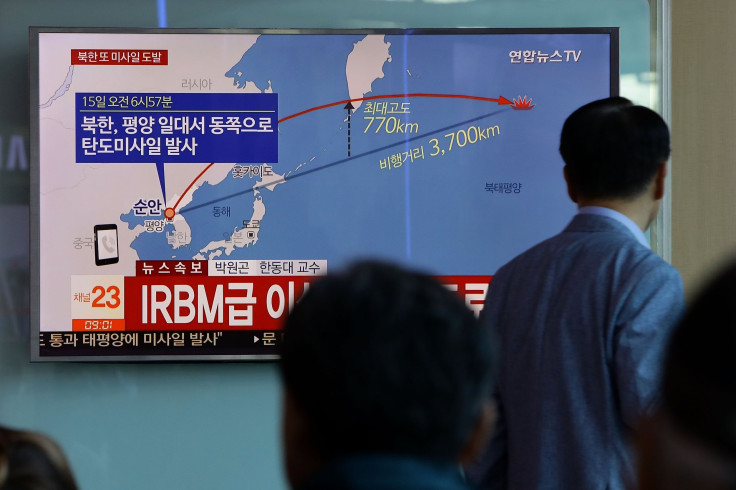Can North Korea's Nuclear Missiles Hit The United States?

Repeated warnings from North Korea in recent days continued to threaten the possibility of all-out nuclear war with the United States. The hermit kingdom demanded Wednesday that the U.S. take the possibility of a missile launch “literally.” But just how far can North Korea’s nuclear arsenal reach?
A lack of concrete information out of the notoriously secretive country makes it hard to ascertain with complete certainty just what its stockpile of nuclear weapons holds. In 2017 alone, North Korea fired 22 missiles during 15 separate tests. By June, the country claimed to have an intercontinental ballistic missile, or ICBM, with the potential to reach widespread targets throughout the world.
North Korea’s nuclear missiles fall into five categories: short range, medium range, intermediate range, intercontinental and submarine-launched ballistic missiles. Intermediate range missiles have the capacity to reach targets 3,000 kilometers, or 1,860 miles away, putting U.S. military bases on the island of Guam within striking distance. Intercontinental ballistic missiles have the capacity to reach more than 5,500 kilometers, or 3,400 miles away. Those longest-range missiles put Alaska and parts of the West Coast within striking distance.
It remains unclear just how effective North Korea’s technology currently is. As of now, most experts agree North Korea cannot successfully launch a missile any farther than Asia, according to CNN. But if North Korea continues to work on its nuclear capabilities at the current pace, it could have a missile that can reach Seattle by the end of Trump’s first term in office, former CIA director Michael Hayden told CNN.
Threats from the regime against the U.S. have increased in recent days. In a message broadcast last week by the country’s state-run media service, North Korea warned of an “unimaginable strike” against the U.S. The threat appeared to come as a response to joint military drills being carried out by the U.S. and South Korea off the Korean Peninsula.
“The U.S. is running among by introducing under our nose the targets we have set as primary ones,” the message said. “The U.S. should expect that it would face an unimaginable strike at an unimaginable time.”
The country also reiterated its threat against Guam.
“We have already warned several times that we will take counteractions for self-defense, including a salvo of missiles into waters near the U.S. territory of Guam,” the state news agency said, quoting Kim Kwak Hak, a researcher at the Institute for American Studies of the North Korean Foreign Ministry. “The U.S. military action hardens our determination that the US should be tamed with fire and lets us take our hand close to the ‘trigger’ for taking the toughest countermeasure.”
A top private defense executive, however, said recently that the U.S. is more than capable of defending itself against a North Korean attack.
“I would say relative to the North Korea threat, you shouldn’t be worried,” Thomas Kennedy, the CEO of Patriot missile defense creator Raytheon, told CNBC Tuesday. “We just need to make sure we continue to fund that capability so we have the systems in place that can counter that threat.”

© Copyright IBTimes 2024. All rights reserved.












